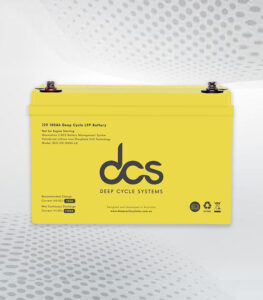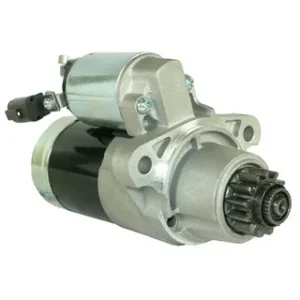Air-Ventilation is critical in maintaining healthy indoor environments by ensuring a continuous fresh air flow while removing pollutants. A well-designed ventilation system can significantly enhance indoor air quality, impacting the health and well-being. This blog post will explore 12 crucial aspects of air ventilation to help you understand its significance and how it can improve the air quality in your living and working spaces.
The Importance of Air-Ventilation
Proper Air-Ventilation is crucial for diluting and removing indoor pollutants such as volatile organic compounds (VOCs), carbon dioxide, and other harmful substances. Additionally, it plays a key role in controlling humidity levels, thereby preventing mould and bacteria growth. Inadequate ventilation can lead to stale indoor environments, potentially causing health problems and reducing productivity. Effective ventilation ensures a healthier and more comfortable living and working space, enhancing overall well-being.
Types of Ventilation Systems
Ventilation systems are essential for maintaining indoor air quality and comfort in buildings, and they can be categorised into three main types: natural, mechanical, and hybrid. Natural ventilation systems rely on openings such as windows, vents, and other architectural features to promote airflow, harnessing outdoor breezes and temperature differences. On the other hand, mechanical ventilation systems utilise fans, ducts, and exhaust systems to provide consistent and controlled air circulation, ensuring optimal ventilation regardless of external conditions.
Hybrid systems combine natural and mechanical approaches, enhancing energy efficiency and air quality by utilising passive methods when conditions permit and active methods when necessary. Each ventilation type is tailored to specific building designs and occupancy needs, providing unique benefits that contribute to a healthy indoor
Natural Ventilation Techniques
Natural ventilation effectively promotes air exchange within buildings, utilising openings such as windows, vents, and louvres. The indoor environment can be refreshed by cross ventilation—where opposing windows are opened to allow fresh air flow. Stack ventilation takes advantage of temperature differences, allowing warm air to rise and exit through higher openings while cooler air is drawn in from lower ones. Additionally, night purge ventilation cools buildings by facilitating air exchange during cooler nighttime hours. Although this method is energy-efficient and cost-effective, its effectiveness may be diminished in urban areas with pollution or noise.
Benefits of Air-Ventilation
Proper Air-Ventilation is essential for maintaining a healthy indoor environment, significantly impacting airflow and indoor air quality.
Improved Indoor Air Quality
Effective ventilation helps remove pollutants, allergens, and excess moisture, promoting healthier indoor air.
Enhanced Comfort
Adequate airflow maintains optimal temperature and humidity levels, ensuring a comfortable living space.
Odor Control
Ventilation helps eliminate unpleasant odours from cooking, pets, and other sources, creating a fresher atmosphere.
Reduced Mold Growth
Proper ventilation minimises the risk of mould and mildew development by controlling humidity levels.
Energy Efficiency
A well-ventilated space can enhance energy efficiency, allowing HVAC systems to operate more effectively.
Increased Safety
Ventilation helps reduce the buildup of harmful gases, such as carbon monoxide, ensuring a safer indoor environment.
Enhanced Productivity
Improved air quality and comfort contribute to better focus and productivity in workspaces and schools.
Mechanical Ventilation Methods Explained
Mechanical ventilation involves using fans, ducts, and air handling units to effectively manage indoor air quality. Systems can be classified into exhaust-only, supply-only, and balanced types, each providing specific benefits. These systems operate independently of external weather, making them ideal for modern, airtight buildings. They ensure consistent air exchange, contributing to healthier and more comfortable indoor environments.
Importance of Air Filters in Ventilation
Air filters are essential in mechanical ventilation systems to remove dust, allergens, and other particulates from the air. High-efficiency particulate air (HEPA) filters are especially effective at capturing microscopic particles, contributing to cleaner indoor environments. Regular maintenance and timely filter replacement are vital to optimal performance and air quality.
Ventilation and Energy Efficiency
Energy-efficient ventilation systems like HRVs and ERVs can significantly cut energy use by recovering heat or coolness from exhausted air and transferring it to incoming fresh air. Proper insulation and sealing enhance these systems’ efficiency. Smart ventilation systems that adjust airflow based on occupancy and air quality can further optimise energy use. Additionally, incorporating renewable energy sources can make ventilation systems even more sustainable. These measures collectively contribute to lower energy bills and a reduced carbon footprint.
Regulations and Standards for Ventilation
Ventilation systems are essential for maintaining a safe and comfortable indoor environment, and they must adhere to specific regulations and standards to ensure their effectiveness. In the UK, for instance, Building Regulations Part F outlines detailed requirements for ventilation in new constructions, specifying minimum airflow rates, design considerations, and installation guidelines. These regulations aim to provide adequate fresh air while controlling pollutants and humidity, ultimately promoting a healthy indoor atmosphere. Compliance with these standards is crucial for optimal air quality and occupant comfort but also plays a vital role in enhancing energy efficiency and reducing health risks associated with poor ventilation.
The Importance of Air Ventilation: Boosting Comfort and Reducing Allergens
Air-Ventilation is critical in maintaining a comfortable and healthy indoor environment. Proper airflow ensures that fresh air is circulated throughout living and working spaces, which helps regulate temperature and humidity levels. When air can move freely, it enhances comfort and prevents the accumulation of stale air, odours, and indoor pollutants. Excess moisture can lead to mould growth without adequate ventilation, while stagnant air can exacerbate allergies and respiratory issues. Therefore, understanding airflow basics is essential for creating a conducive atmosphere at home or commercial buildings.
Effective Air-Ventilation is also vital for reducing allergens and improving indoor air quality. Pollutants such as dust, pollen, and pet dander can accumulate in poorly ventilated spaces, posing health risks to occupants. Harmful particles can be flushed out by ensuring proper air circulation, allowing cleaner air to enter. Regularly maintaining ventilation systems and using air purification methods can further enhance the benefits of air ventilation. Ultimately, investing in a well-ventilated space leads to healthier living conditions, promoting better well-being for everyone in the area.
Tips for Improving Home Ventilation
Proper Air-Ventilation is essential for maintaining healthy indoor air quality and enhancing comfort in your home. Here are tips for improving home ventilation:
Assess Your Current Ventilation System
Evaluate your existing system to identify areas that require improvement or adjustments.
Utilise Natural Ventilation
Open windows and doors to allow fresh air to circulate and reduce indoor pollutants naturally.
Install Exhaust Fans
Use exhaust fans in kitchens and bathrooms to effectively remove excess moisture and odours.
Incorporate Air Purifiers
Invest in high-quality air purifiers to filter out allergens and pollutants, improving overall air quality.
Regularly Clean Vents and Ducts
Dust and debris can accumulate in vents, hindering airflow. Schedule regular cleanings to ensure efficiency.
Seal Gaps and Leaks
Check for air leaks around windows, doors, and ducts. Sealing these gaps helps maintain consistent airflow.
Consider Mechanical Ventilation Systems
For homes with limited natural airflow, mechanical ventilation systems can provide controlled and continuous fresh air exchange.
By implementing these strategies, you can significantly enhance your home’s airflow and indoor air quality.
Understanding the Role of Humidity in Airflow
Airflow and indoor air quality are crucial for creating a comfortable and healthy living environment. Effective Air-Ventilation systems facilitate the movement of fresh air while removing pollutants and excess humidity. Humidity plays a significant role in this process; high levels can lead to mould growth, discomfort, and respiratory issues, while low humidity may cause dry skin and irritation. Balancing humidity levels is essential for optimising airflow, as it influences how air circulates and the effectiveness of ventilation systems. Properly managing humidity enhances indoor air quality and improves overall well-being and comfort.
The Role of Ventilation in Moisture Control
Proper ventilation helps manage indoor moisture levels, which is crucial in preventing condensation, mould growth, and structural damage. It facilitates the removal of moisture-laden air, particularly in high-humidity areas such as bathrooms and kitchens, replacing it with drier air. This exchange not only reduces humidity but also helps maintain the structural integrity of your home. Effective ventilation systems are particularly beneficial in modern, airtight buildings with limited natural air exchange. Ensuring good airflow through mechanical or hybrid ventilation solutions can mitigate moisture-related issues, contributing to a healthier indoor environment. Regular maintenance, including cleaning vents and replacing filters, enhances the system’s efficiency in moisture control.
Ventilation and Indoor Air Pollutants
Indoor air pollutants originate from various sources, such as building materials, furnishings, and household activities. Ventilation effectively removes pollutants from cleaning products and paints, including carbon monoxide, radon, and VOCs. Poor ventilation can exacerbate health issues such as respiratory problems and allergies. By ensuring consistent airflow, proper ventilation reduces pollutant concentration, promoting a healthier indoor environment.
Smart Ventilation Systems
Smart ventilation systems use advanced sensors and automation to enhance indoor air quality and energy efficiency. These systems can dynamically adjust ventilation rates in response to real-time occupancy, air quality metrics, and external weather conditions. By integrating with home automation networks, smart ventilation allows for remote control and scheduling, providing unmatched convenience. Additionally, features like heat recovery and energy-efficient fans make them an eco-friendly choice. By optimising airflow only when needed, smart systems can significantly reduce energy consumption and improve indoor comfort, making them ideal for modern, smart homes and offices.
Common Ventilation Issues and Solutions
Common ventilation issues include poor airflow, excessive noise, and high energy usage. Regularly cleaning ducts and replacing filters can improve airflow. Ensure vents are free from obstructions to maintain efficiency. For noise concerns, consider using sound-dampening materials or investing in quieter ventilation equipment. High energy consumption can be mitigated by installing energy-efficient fans and considering smart ventilation systems that adjust airflow based on occupancy and air quality. Addressing these common issues through regular maintenance and upgrades can enhance your ventilation system’s overall performance and longevity, ensuring a healthier and more comfortable indoor environment.
Conclusion
In conclusion, understanding Air-Ventilation is crucial for maintaining optimal indoor air quality and ensuring a healthy living environment. Proper airflow reduces pollutants and allergens and enhances comfort and energy efficiency. By being aware of the various ventilation systems and their impact on airflow, individuals can make informed decisions to improve their indoor spaces. Regular maintenance and monitoring of ventilation systems are essential to sustain quality air. Ultimately, prioritising effective air ventilation contributes significantly to overall well-being, making it an indispensable aspect of home and workplace design.
FAQ’s
What is air ventilation?
Air ventilation exchanges indoor air with outdoor air to improve indoor air quality. It involves the intake of fresh air and the exhaust of stale air, promoting healthier environments.
Why is indoor air quality important?
Indoor air quality (IAQ) is crucial for health and comfort. Poor IAQ can lead to respiratory issues, allergies, and other health problems. Ensuring proper ventilation helps reduce pollutants, humidity, and odours.
How does airflow affect ventilation?
Airflow refers to the movement of air within a space. Effective airflow facilitates proper ventilation, ensuring fresh air reaches all areas while stale air is expelled, improving overall air quality.
What are common ventilation systems?
Common ventilation systems include natural ventilation (using windows and vents), mechanical ventilation (using fans and HVAC systems), and hybrid systems that combine both methods.
How can I improve my indoor air quality?
To enhance IAQ, ensure proper ventilation by opening windows, using exhaust fans, and maintaining HVAC systems. Additionally, air purifiers should be considered, and indoor pollutants like tobacco smoke and chemicals should be reduced.




